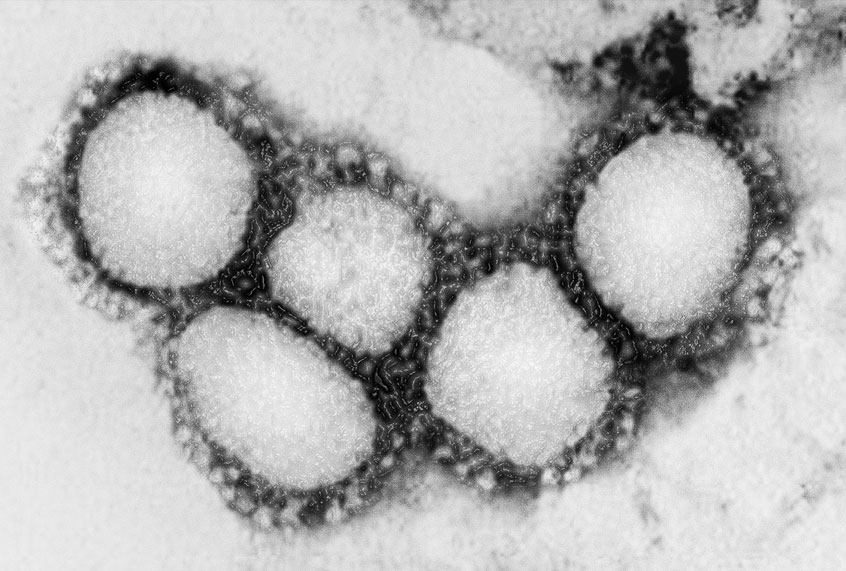The U.S. on Thursday recorded 4,591 deaths from COVID-19, nearly doubling Wednesday’s record of 2,569, according to a Wall Street Journal statistical analysis. Meanwhile, Department of Defense records show 4,431 Americans were killed during Operation Iraqi Freedom.
President Donald Trump has called himself a “wartime president,” frequently casting the new coronavirus as an invisible and foreign enemy. However, the bleak contrast of daily deaths with real-war casualties illustrates the highly-compressed blitz the virus has made on the country and suggests the president’s rhetoric may not befit the moment.
The U.S. recorded its first thousand COVID-19 deaths between Feb. 26 and March 26. It has reported more than 34,000 since then, or the equivalent of nearly a dozen 9/11 attacks in the span of three weeks. Numbers spiked again this week after the CDC began including “probable cases” and “probable deaths” in its records. (The agency defines “probable” as a case that meets clinical criteria and epidemiological evidence, such as a patient who displays symptoms even without a confirming lab test. Infections may also be classified as “probable” if death certificates or vital records list coronavirus as a cause.)
It is unclear how many previously unreported “probable deaths” were included in the Wall Street Journal’s analysis. Requests for clarification by Salon went unanswered.
Several cities and states have also begun reporting probable deaths. The city of New York on Tuesday added 3,700 previously uncounted deaths. The pandemic’s global epicenter as of Friday recorded totals of more than 11,000 deaths and nearly 120,000 cases. (City health officials had already been recording presumed COVID-19 deaths for individuals with the requisite “symptoms and medical history,” The New York Times reported.)
In a New York Times op-ed, also published Tuesday, epidemiologists estimated that 90% of COVID-19 deaths in the U.S. might have been prevented if social distancing policies went into effect two weeks earlier. If the policies were in place even one week earlier, on March 9, deaths could have been reduced by up to 60 percent, the the experts said.
Trump issued social distancing guidelines March 16. New York’s stay-at-home order took effect March 22.
In other words, the virus’ logarithmic spread works both ways: possible exponential growth but also possible exponential reduction. The NYT op-ed points out that Kentucky issued social distancing policies March 26, but Tennessee waited until March 31. As of last Friday, Kentucky had 1,693 confirmed cases (379 per million population) and Tennessee had 4,862 (712 per million).
There are additional costs. Dr. Oxiris Barbot, the commissioner of the NYC Health Department, told The Times that 3,000 more people died in the city between March 11 and April 13 than would be expected during the same period in a normal year. Though these deaths were not tied specifically to COVID-19, they may not have otherwise happened had the pandemic not flooded the health care system.
Voice on the right have alleged that the probable death metric inflates the “real” count, and some have even ascribed the decision to include them a nefarious but ill-defined intent on the part of health officials. At the same time, however, conservatives also accuse China of deflating its death total as part of a cover-up. Some approved when Chinese officials revised death totals for Wuhan today, increasing them by 50%.
Despite the grisly numbers, Trump, along with an increasing number of supporters and allied officials, continues to push for a return to normal.
“Our country has to get open, and it will get open,” Trump said at a Rose Garden briefing earlier this week. “And it’ll get open safely and hopefully quickly — some areas quicker than other areas.”
The president has set a May 1 date to begin lifting some restrictions and suggested that some states could open before May 1. In a series of Friday morning tweets, the president appeared to throw support behind demonstrators who jammed Michigan streets in protest of the Democratic governor’s public health regulations.
But it might be bluster. For instance, some CEOs on Trump’s newly-announced economic council said they had not yet been briefed on any plan to reopen the economy.
Coronavirus task force official Dr. Anthony Fauci has repeatedly thrown cold water on hopes for a snappy return, and experts say testing capacity must double or triple before the country can safely begin to relax social distancing guidelines. The White House coronavirus task force on Thursday outlined a three-phase plan to try to return the country to normal over the coming months, though they left timelines up to local officials.
“We want governors, with the data that they have, community by community, to set those timelines,” Dr. Deborah Birx, a senior adviser, said.


